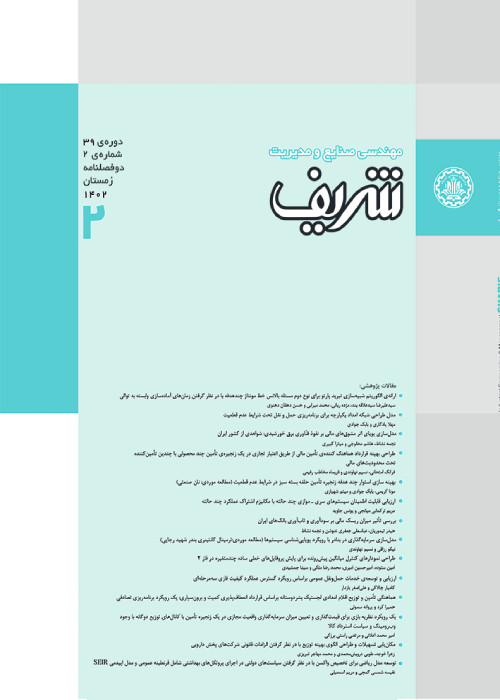RESILIENT-GREEN SUPPLY CHAIN REDESIGN TO WATER SUPPLY SYSTEM: A CASE STUDY OF SHAHR-E-KORD'S WATER SUPPLY SYSTEM
In recent years, due to globalization along with the increased rate of natural and man-made disasters, designing a resilient supply chain to cope against disruption is crucial. Moreover, the water supply networks encounter increasing probability of disruption by passage of time. The water supply systems have dedicated structure which studied by few papers in the context of the supply chain. Furthermore, none of them considered disruption. Current research investigates redesigning a green-resilient water supply system. Two risk mitigation strategies, namely lateral transshipment between water tanks and fortification of the pipeline are applied to face against disruption. A multi-objective mixed-integer linear programming is developed for the problem. The objectives are minimizing cost and environmental pollutant. The total cost includes the cost of establishments of new water tanks and new pipelines, cost of resizing the water tanks, cost of purchasing and installing new water pumps, cost of used electric energy by water pumps, cost of pipeline fortification. And the environmental objective is related to pollutants created by the supply chain's activities including pollutants created by using electric energy, establishments of new water tanks, new pipeline and resizing the water tanks. The application of the proposed model is investigated in a real case study in the water supply of Shahr-e-kord. The supply chain of the case study includes suppliers (e.g., walls and the Kohrang River), pump stations, water tanks, and water distribution center. The water supply network of Shahr-e-kord has two types of disruptions. First, suppliers may disrupt due to chemical pollutant (e.g., disruption in walls) or natural disaster (e.g., disruption in the Kohrang River due to flood). The second disruption is related to pipelines failures. Results revealed that the resilient model outperformed the non-resilient model. The cost of the resilient model enjoys a slight decrease in comparison with non-resilient mode while its environmental objective is 33% better than the non-resilient one. Additionally, lateral transshipment strategy has a better performance in both cost and environmental objectives than fortification strategy.
- حق عضویت دریافتی صرف حمایت از نشریات عضو و نگهداری، تکمیل و توسعه مگیران میشود.
- پرداخت حق اشتراک و دانلود مقالات اجازه بازنشر آن در سایر رسانههای چاپی و دیجیتال را به کاربر نمیدهد.


